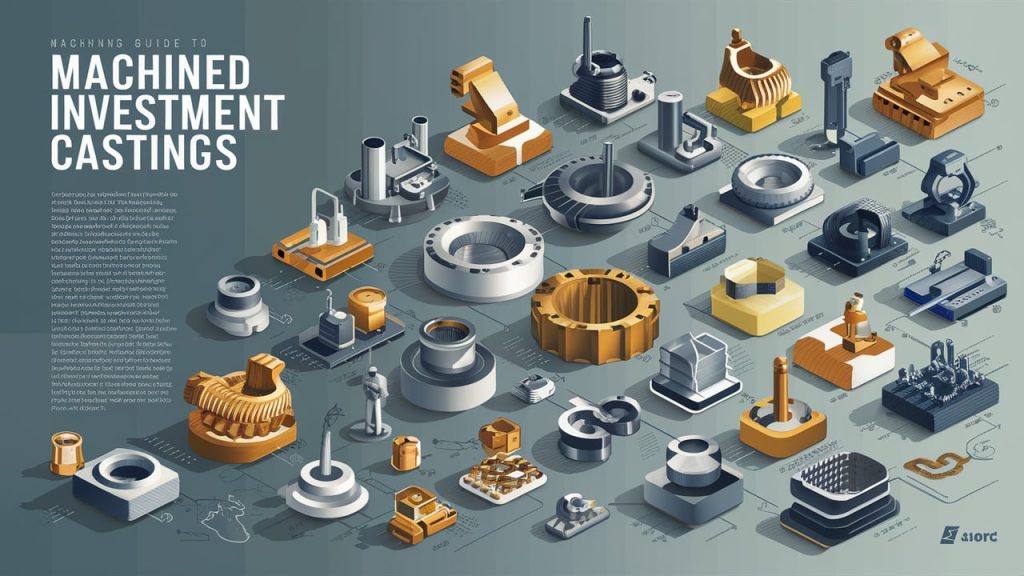Known for their excellent quality, detailed features, complicated designs, exact proportions, and smooth surfaces, investment castings today are valued for their fine intricacies. Nevertheless, were you aware that investment castings often ask for a far lower amount of machining and other post-cast processing than conventional castings or components that have been fabricated? Because of this, machined investment castings are an excellent option for design engineers who are searching for components that are both lightweight and high-strength, while also reducing potential lead times, waste, and energy expenses.
What Means Investment Casting For Engineering?
Some engineers demand machined investment castings owing to exact dimensional requirements, tight tolerances, custom profiles, tapped holes, and other factors. This is despite the fact that obtaining “net-shape” or “near-net-shape” cast components significantly decreases the costs associated with secondary processing. According to industry standards, the tolerances for investment casting are typically +/- 0.010 inches for the first inch and +/- 0.005 inches for each inch that follows. A reduction or elimination of the machining that was previously necessary on sand castings, fabrications, or forgings is something that investment casting engineers are able to do throughout the design for manufacturing process. In the event that machining is still required, the requirements for machining an investment casting will be lower than those for sand castings or welded fabrications on the other hand.
What Kinds Of Investment Casting Are There For Engineering?
The investment casting for engineering will be utilised in a variety of different ways, which will determine the sort of machining procedure that is required. Under the aerospace and power generation sectors, for instance, machined investment castings are used for a wide variety of safety-critical applications that call for high-strength under very harsh environmental conditions. It is essential for these industries to guarantee that stringent tolerances are attained by casting and machining the metal components to exact specifications. This is how the tolerances are accomplished.
For the purpose of achieving the final configuration of a component, many types of machining equipment and tools are used. Some of these machining operations are as follows:
- Turning
Turning is the process of removing surplus material from a spinning component in order to form a cylindrical shape. This is accomplished using a cutting tool that has a single edge. As the tool moves along the spinning component, it leaves behind a trail of metal that has been meticulously created. This is the result of a harmonic combination of the geometry of the cutting edge, the material of the tool, and the dynamics of the machine.
- Drilling
During the drilling process, a circular hole is made in the casting. With each successful spin, however, the hole starts to take form, with its edges becoming more defined and sharper until the dimensions that are wanted are reached. After all is said and done, the drill bit is removed, leaving behind a hole that is precisely round and ready to accept the subsequent component or assembly. This marks the successful completion of an important step in the manufacturing process.
- Boring
The process of boring involves the use of a single-point tool to increase the precision of a hole that has previously been formed coarsely. Engineers are able to precisely tailor the size of the hole by carefully setting the single point of the tool. This eliminates any defects and abnormalities that may have occurred during the first drilling procedure.
- Reaming
Reaming is the process of removing a little quantity of metal from a hole that has previously been drilled in order to create a more precise finishing tolerance. Because even the smallest error in computation might put the integrity of the whole building at risk, this delicate technique demands the highest attention to detail before it can be completed.
- Milling
During milling, a rotating tool that has many cutting edges is used to generate a surface that is straight. The end result is a surface that is not only smooth but also amazingly straight, which makes it an indispensable tool for both amateur craftspeople and those who like doing their own home improvement projects.
Final words
Whether you’re looking to improve the quality of your existing products, reduce production costs, or develop new and innovative solutions, we hope that this ultimate guide of investment casting for engineering has provided you with the knowledge and insights.



